 Technology
Technology  Technology
Technology  Humans
Humans 10 Everyday Human Behaviors That Are Actually Survival Instincts
 Animals
Animals 10 Animals That Humiliated and Harmed Historical Leaders
 History
History 10 Most Influential Protests in Modern History
 Creepy
Creepy 10 More Representations of Death from Myth, Legend, and Folktale
 Technology
Technology 10 Scientific Breakthroughs of 2025 That’ll Change Everything
 Our World
Our World 10 Ways Icelandic Culture Makes Other Countries Look Boring
 Misconceptions
Misconceptions 10 Common Misconceptions About the Victorian Era
 Mysteries
Mysteries 10 Strange Unexplained Mysteries of 2025
 Miscellaneous
Miscellaneous 10 of History’s Most Bell-Ringing Finishing Moves
 Technology
Technology Top 10 Everyday Tech Buzzwords That Hide a Darker Past
 Humans
Humans 10 Everyday Human Behaviors That Are Actually Survival Instincts
 Animals
Animals 10 Animals That Humiliated and Harmed Historical Leaders
Who's Behind Listverse?

Jamie Frater
Head Editor
Jamie founded Listverse due to an insatiable desire to share fascinating, obscure, and bizarre facts. He has been a guest speaker on numerous national radio and television stations and is a five time published author.
More About Us History
History 10 Most Influential Protests in Modern History
 Creepy
Creepy 10 More Representations of Death from Myth, Legend, and Folktale
 Technology
Technology 10 Scientific Breakthroughs of 2025 That’ll Change Everything
 Our World
Our World 10 Ways Icelandic Culture Makes Other Countries Look Boring
 Misconceptions
Misconceptions 10 Common Misconceptions About the Victorian Era
 Mysteries
Mysteries 10 Strange Unexplained Mysteries of 2025
 Miscellaneous
Miscellaneous 10 of History’s Most Bell-Ringing Finishing Moves
10 Overlooked Criminal Scandals Involving Hollywood Actors
It’s almost a daily occurrence that a scandal involving a famous celebrity pops up in the media. Even if the scandal is a very minor news item, the existence of the Internet ensures that it will be permanently archived. Back in the golden age of Hollywood, criminal scandals involving famous actors probably occurred with just as much frequency, but with far less media coverage to put these scandals in the spotlight, it was a lot easier to cover them up and make them go away. At least, it didn’t take long for them to be forgotten.
10 The Rape Of Patricia Douglas
It’s a sad fact of life that sexual assault often goes unpunished in Hollywood. If a woman is raped by a powerful or prominent person in the industry, she can be ostracized for speaking out about her experience. One of the most tragic examples of this involved an aspiring actress named Patricia Douglas, who traveled to Hollywood from her native Missouri and became a background dancer in musicals. In 1937, Douglas answered a casting call from MGM in which over 100 female dancers were hired to act as hostesses for a sales convention.
On May 5, the convention concluded with a wild stag party at the Hal Roach Studios ranch. Throughout the party, the women were frequent targets of sexual harassment from the intoxicated guests. At one point, actor Wallace Beery beat up a couple of men to protect one of the hostesses. Unfortunately, Patricia Douglas was not so lucky.
Douglas was forcibly fed alcohol by a salesman named David Ross before he dragged her out to his car and raped her. When Douglas was treated at a nearby hospital, no report was filed with the police, so she decided to file a complaint against MGM. The studio responded by smearing Douglas’ name in the press. When Ross appeared in front of a grand jury, they did not indict him. Douglas attempted to file a lawsuit against Ross and some prominent MGM executives, including Hal Roach and Eddie Mannix. The court dismissed her case and Douglas was blacklisted by Hollywood. Her tale might have faded into obscurity, but the 86-year-old Douglas was tracked down in 2003. Shortly before her death, she was able to achieve some vindication by sharing her story in Vanity Fair magazine and it was later chronicled in a documentary called Girl 27.
9 The Shooting Of Jennings Lang
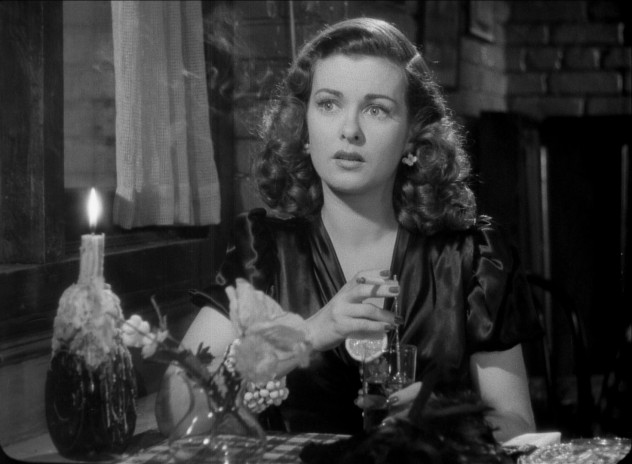
Joan Bennett was a successful Hollywood actress who hit her peak of stardom in the 1940s, often playing femme fatale roles in film noir thrillers. During this time, she married producer Walter Wanger and was represented by agent Jennings Lang.
Bennett and Lang eventually started a secret affair. On December 13, 1951, Bennett parked her convertible at Lang’s office, and the pair left together in his car. Hours later, they returned to the office and Bennett climbed back into her car. Lang was standing outside the vehicle chatting with Bennett when they saw Walter Wanger suddenly appear in the parking lot. Wanger fired two bullets at Lang in a fit of jealous rage.
Earlier that day, Wanger noticed his wife’s car was parked at Lang’s office and spent hours waiting for her to return. His shots at Lang did not prove fatal, as the bullets entered his right thigh and groin. At the time, Wanger was under considerable stress because of financial troubles with some of his film productions. Wanger was indicted for assault with intent to commit murder, and his lawyers mounted a “temporary insanity” defense. He wound up being sentenced to four months at the Wayside Honor Farm before successfully resuming his career. However, the scandal seriously tarnished Joan Bennett’s career. For a while, she was practically blacklisted and only appeared in a handful of movie roles before resurrecting her career on television during the 1960s. Believe it or not, Bennett and Wanger did not divorce until 1965.
8 The Mysterious Death Of Ted Healy
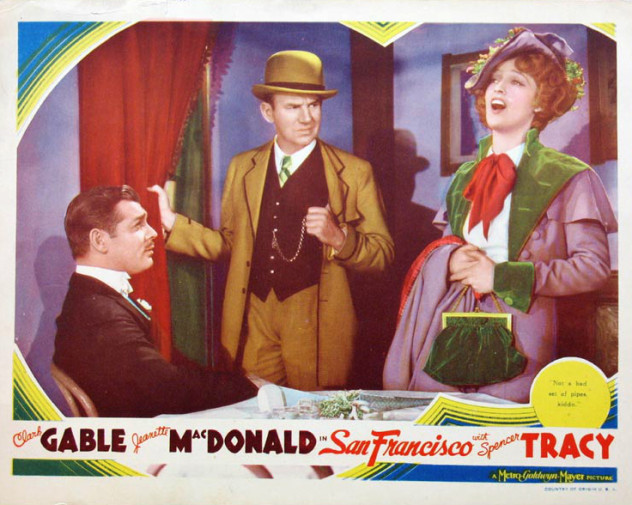
Throughout the 1920s, Ted Healy was a notable vaudeville performer best known for founding the Three Stooges. Healy went on to enjoy a successful acting career in Hollywood when he suddenly died in his Los Angeles home on December 21, 1937, at the age of 41. Since Healy was an alcoholic, his initial cause of death was believed to be acute toxic nephritis. However, since he had cuts and bruises on his body, there were suspicions of foul play.
Two nights before his death, Healy had been at the Trocadero nightclub and was reportedly attacked by three men outside. He sought medical attention to treat his injuries but was not hospitalized. After being taken home, Healy became violently ill and fell into a coma before he died.
Disturbing rumors started circulating that Healy’s death involved some very famous folks. One witness claimed that the three assailants who attacked him were Wallace Beery (a major box office star with MGM), Albert R. Broccoli (who later found success by producing the James Bond films), and Broccoli’s cousin, Pat DiCicco (a Hollywood agent who had reportedly worked as a henchman for notorious mobster Lucky Luciano). DiCicco allegedly had bad blood with Healy because the actor once had an affair with his ex-wife. Broccoli did admit to having a minor fistfight with Healy at the Trocadero but never confirmed that Beery and DiCicco were involved and claimed that Healy was not injured. Some people believe that MGM orchestrated a cover-up to protect Beery and that DiCicco’s alleged ties to the mob frightened people into keeping quiet. Whatever the truth, Ted Healy’s death will always remain shrouded in mystery.
7 The Marijuana Bust Of Robert Mitchum
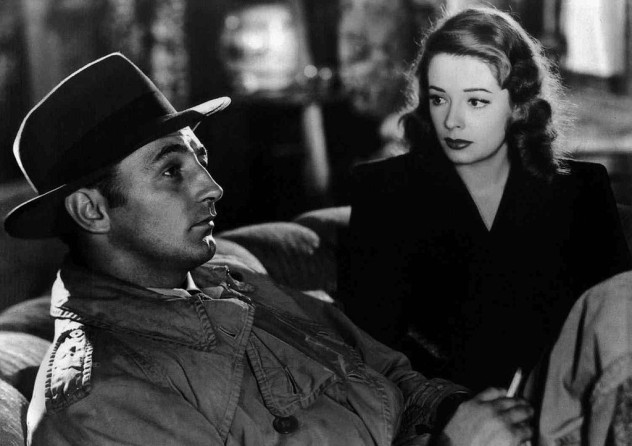
These days, people barely raise their eyebrows when Hollywood actors are busted for marijuana possession. However, back in the 1940s, the public had a limited understanding of marijuana and was very fearful of the drug. At the time, Robert Mitchum was one of the top box office stars in Hollywood.
On September 1, 1948, Mitchum attended a “reefer party” at the Laurel Canyon home of 19-year-old actress Lila Leeds. Shortly after Mitchum’s arrival, police raided the party and caught the actor smoking a joint. Both Mitchum and Leeds were busted for marijuana possession. Mitchum openly stated that this would probably spell the end of his career. There was a call for his movies to be banned; one headline actually read, “A MAN IN THE GRIP OF DEMON DRUGS!”
Since Mitchum was a known marijuana user, he had been under police surveillance for some time, and a listening device was allegedly planted at the house before the reefer party. Mitchum considered himself a scapegoat, as the authorities were on an anti-drug crusade and wanted to make an example out of a big-name Hollywood star.
In the end, the arrest wound up being nothing more than a minor hiccup in the actor’s career. He was found guilty of criminal conspiracy to possess marijuana and given a two-year sentence. Most of that sentence was suspended and Mitchum only had to serve 60 days at an honor farm. In fact, the scandal only seemed to help Mitchum’s career, as he would continue to star in hit movies for decades to come. Lila Leeds, on the other hand, was not so lucky, as the drug bust tainted her reputation and brought an end to her acting career.
6 The Death Of Ray Raymond
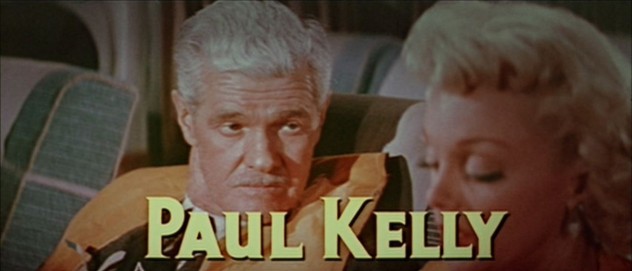
Paul Kelly started out as a child actor during the silent film area and continued a successful career on stage and screen into the 1920s. By 1927, Kelly was embroiled in an affair with an actress named Dot Mackaye. Mackaye was married to vaudeville performer Ray Raymond and carried on the affair with Kelly while her husband was on the road. Raymond suspected his wife was unfaithful and the whole situation came to a boil on April 16. That night, Kelly and Mackaye got drunk together at his home. The inebriated actor decided to phone Raymond and antagonize him. Raymond soon challenged Kelly to come over to his place.
After Kelly arrived at Raymond’s house, the two men engaged in a heated argument about the affair and started scuffling. Kelly put Raymond in a headlock and kicked him six times in the head before knocking him out cold with a punch to the left eye. It seemed like Raymond’s injuries were minor, but he lapsed into a coma the following morning and died of brain hemorrhaging three days later. Kelly was arrested and charged with murder.
The situation became a sensational scandal, but at Kelly’s trial, Mackaye tried to deny allegations that an affair took place. Raymond’s maid refuted that claim by testifying that Kelly often slept over at the couple’s house. Kelly was eventually sentenced to 1 to 10 years for manslaughter; he served two years at San Quentin before he was released. Mackaye served two months for helping cover up the crime and married Kelly after his release. Surprisingly, the scandal only seemed to help Kelly’s acting career, as his reputation helped him land a lot of “tough guy” roles. He didn’t stop working in Hollywood until his death in 1956.
5 The Faked Kidnapping Of Marie McDonald
Marie “The Body” McDonald earned her nickname as a popular Hollywood pin-up girl, but she made a successful transition to acting, appearing in numerous films throughout the 1940s and early ’50s. She also led a very scandalous personal life, which included a bizarre kidnapping hoax in 1957. Shortly after midnight on January 4, McDonald’s estranged husband, Harry Karl, and her mother both received phone calls from an anonymous man, who told them McDonald had been kidnapped from her Encino home. A note confirming this kidnapping story was found in McDonald’s mailbox. McDonald’s agent, her current boyfriend, and a columnist each later received calls from McDonald herself, who claimed she was being held captive. One day later, McDonald was discovered 160 kilometers (100 mi) away in Indio, walking down the road in her pajamas.
McDonald told police that two armed men had abducted her from her home and were planning to ask for a $30,000 ransom for her return. They ultimately decided to assault her and leave her in the desert. McDonald even accused her estranged husband of orchestrating the abduction, but he assured police that she was not a mentally stable woman. Indeed, authorities became suspicious of McDonald’s inconsistent story, especially after they found a copy of the novel The Fuzzy Pink Nightgown in her home. The book’s plot involved the kidnapping of a movie star by two men, and many details from McDonald’s story seemed to match perfectly. In fact, a film adaptation of The Fuzzy Pink Nightgown was slated to be released later that year. A grand jury concluded that there was no evidence to support McDonald’s kidnapping story and closed the investigation. Marie McDonald continued to live a tumultuous personal life before succumbing to a drug overdose on October 21, 1965, at the age of 42.
4 Cliff Robertson Blows The Whistle On Studio Embezzlement
During the 1960s and ’70s, Cliff Robertson built himself a successful acting career, winning an Academy Award in 1968 for his performance as the mentally handicapped title character in Charly. He is probably best known to modern audiences for portraying Uncle Ben Parker in the Spider-Man movies. However, there was a time when Cliff Robertson was completely blacklisted by Hollywood for simply doing the right thing. In 1977, the IRS informed Robertson that he had not declared a $10,000 payment from Columbia Pictures, but the actor was certain he never received any money from them. Robertson soon uncovered a $10,000 check from Columbia with his forged signature on it. When studio head David Begelman was confronted about this, he claimed that a lower-level employee was responsible. Robertson did not believe this story and decided to contact the authorities.
An investigation revealed that Begelman had forged Robertson’s signature on the check and was using this same scheme to embezzle thousands of dollars from the studio. Begelman was fired and charged with grand theft but was only sentenced to community service. Columbia was desperate to prevent this scandal from being leaked to the press, so they pressured Robertson to keep quiet. Instead, Robertson chose to go public. As a result, the actor was blacklisted by Hollywood for several years and found very little work. After the scandal was exposed in the Wall Street Journal and a best-selling book, Robertson finally started getting roles again and resurrected his career.
Begelman also resurrected his career when he was hired as studio head for MGM, but he became embroiled in more scandals and personal problems. He committed suicide after going bankrupt in 1995.
3 The Shooting Of Courtland Dines
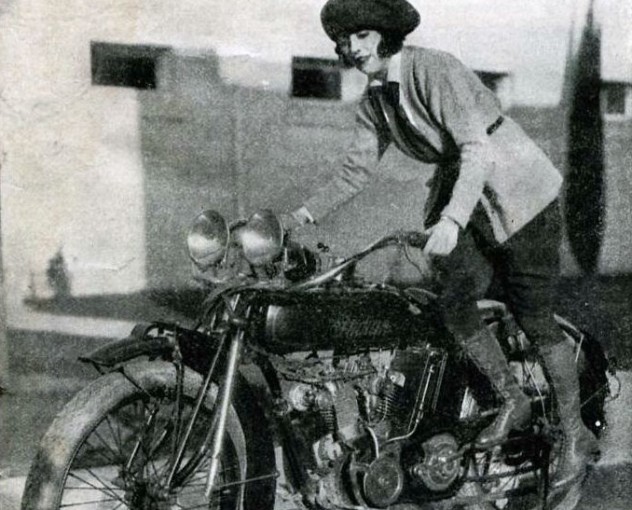
During the silent film era, one of the most prominent actresses in Hollywood was Mabel Normand, but scandal seemed to follow her around everywhere. In 1921, Normand had a close relationship with director William Desmond Taylor, who was shot to death in one of the most famous unsolved murders in Hollywood history. At the time, Normand was a cocaine addict, and the murder was believed to be connected with her drug suppliers. Years later, the actress was at the center of another major scandal. On New Year’s Day 1924, Normand went to the Los Angeles apartment of a millionaire oil broker named Courtland Dines. Dines was romantically involved with another popular actress, Edna Purviance, who was Normand’s friend. The three of them got drunk before Normand’s chauffeur, Joe Kelly, arrived to pick her up.
The story goes that Kelly got into a heated argument with Dines before pulling out a gun and shooting him in the chest. Dines was wounded, but he survived. The gun belonged to Normand, but it was unclear how exactly the shooting went down. One theory is that Dines went after Kelly with a bottle and he was shot in self-defense. There were rumors that Kelly was in love with Normand, and he allegedly told the arresting officer that he shot Dines for supplying her with drugs. However, since the victim and two actresses were heavily intoxicated, they could not provide clear details about what happened. Dines claimed he had blacked out and could not even remember the shooting. When Dines refused to testify at Kelly’s trial, the chauffeur was acquitted. The careers of Mabel Normand and Edna Purviance were essentially destroyed by the scandal, and Normand died of tuberculosis only a few years later at the age of 37.
2 The Suspicious Death Of David Whiting
In 1973, the career of English actress Sarah Miles was at its peak, as she was only a few years removed from an Academy Award–nominated performance in Ryan’s Daughter. Miles was cast to star alongside Burt Reynolds in a screen adaptation of the novel The Man Who Loved Cat Dancing. She was accompanied to the shoot by her 26-year-old business manager, David Whiting. On the evening of February 11, Miles visited Reynolds’ motel room after attending a party and stayed until 3:00 AM. When Miles returned to her own room, the enraged Whiting attacked her and slapped her around. Reynolds came to Miles’ rescue and let her spend the rest of the night with him. When Miles returned to her room in the morning, Whiting was lying dead on the bathroom floor.
Whiting’s cause of death was initially believed to be a drug overdose, but a pharmacologist hired by his Whiting’s family claimed he did not have enough drugs in his system to prove fatal. There was also a cut on the back of Whiting’s head, unexplained scratches on his body, and traces of blood throughout the room.
It eventually came out that Whiting was not just Miles’s business manager, but an obsessed hanger-on who allegedly had a secret affair with the actress even though she was married. He had attacked Miles in a jealous rage because he assumed she was having an affair with Reynolds. Due to the scandalous nature of the story, there were suspicions of foul play. Some believed that Miles and Reynolds were responsible for Whiting’s death and that the studio orchestrated a cover-up. In the end, however, the investigation ruled Whiting’s death to be a suicide, and Miles was cleared of all culpability.
1 Spade Cooley Murders His Wife
Donnell “Spade” Cooley is considered to be the very first country music superstar. During the 1940s, Cooley often showcased his musical talents by performing in Hollywood Westerns. It was during this time that he got married to Ella Mae Evans, a singer in his band. The couple had three children together.
Spade had issues with drugs and alcoholism. Even though he was unfaithful himself, he was constantly jealous of his wife and accused her of having extramarital affairs. In March 1961, Ella Mae confessed to a friend that she once had an affair with one of her husband’s most frequent co-stars, Roy Rogers. Shortly after that, she asked Spade for a divorce. On April 3, Spade murdered Ella Mae inside their Willow Springs home.
The couple’s 14-year-old daughter Melody had fled the house and recounted a horrific tale of witnessing her father beat her mother to death. Melody testified that after an argument about her mother’s alleged infidelities, Spade yanked Ella Mae out of the shower, banged her head against the floor, stomped on her stomach, and burned her with a cigarette. Spade also threatened his daughter with a gun and forced her to watch her mother’s murder.
Spade was convicted of first-degree murder and sentenced to life in prison, but in 1969, he learned he was going to be paroled the following year, thanks to the influence of his longtime friend and California governor Ronald Reagan. On November 23, he was granted a 72-hour furlough to play at a benefit concert in Oakland. After his performance, the 58-year-old singer promptly died of a heart attack backstage. To this day, Spade Cooley is the only convicted murderer to have a star on the Hollywood Walk of Fame.
Robin Warder is a budding Canadian screenwriter who has used his encyclopedic movie knowledge to publish numerous articles at Cracked.com. He is also the co-owner of a pop culture website called The Back Row and recently worked on a sci-fi short film called Jet Ranger of Another Tomorrow. Feel free to contact him here.








